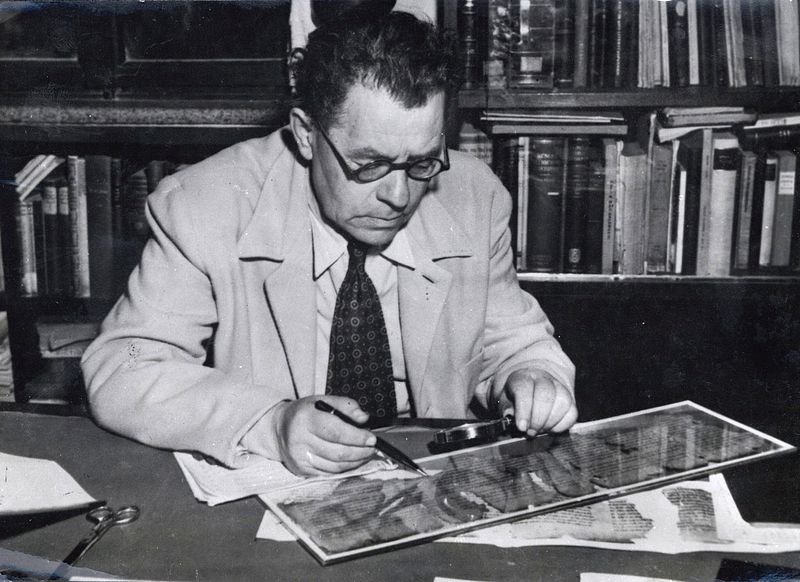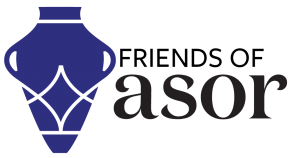
 WELCOME TO THE ASOR BLOG
WELCOME TO THE ASOR BLOG
The American Schools of Oriental Research (ASOR) is the preeminent society for individuals interested in the archaeology of the eastern Mediterranean and the Biblical Lands. This blog is intended to facilitate ASOR’s mission “to initiate, encourage and support research into, and public understanding of, the cultures and history of the Near East from the earliest times.”
The Dilemma of Denial: Scholarly Publication Policies and the Illusion of Power
By: Jonathan Rosenbaum
President Emeritus, Gratz College
For generations, academic journals have been deemed the appropriate venue for the initial publication of ancient inscriptions and artifacts. Nevertheless, last fall, the New York Times became the source of an editio princeps when it announced the discovery of a “faded papyrus fragment” that seemed to be “first known statement from antiquity that refers to Jesus speaking of [his] wife.” The Times reporter had not gained access to the fragment through a dogged effort of investigative journalism or a lucky find on the black market. Rather, Karen L. King, a prolific scholar of early Christianity at the Harvard Divinity School (HDS), had shared the discovery in an interview with the Times, the Boston Globe, andHarvard Magazine. Prof. King provocatively described the fragment as the “Gospel of Jesus’s Wife.”
Popular media immediately presented a panoply of opinions by respected papyrologists, Coptic linguists, Christian theologians, and laypeople. The Vatican weighed in with both an editorial and an article in L’Osservatore Romano, the former declaring the papyrus a fakeand the latter by Coptic scholar, Alberto Camplani, expressing a more guarded opinion based upon the lack of provenance.
Prof. King moved forward. She continued her work with a series of specialists who undertook the examination of the fragment using techniques ranging from linguistics and paleography to chemical analysis. The circumstances of the papyrus’s discovery are unknown and the earliest academic awareness of the fragment dates to 1982. Nevertheless, on the basis of initial analyses, Prof. King preliminarily concluded that the papyrus likely dates to the fourth century and posited its initial composition in the second half of the second century.
Shortly before giving her interview, Prof. King had submitted an article on the fragment to the Harvard Theological Review (HTR) whose own reviewers provided important observations and whose editors accepted her article subject to the conclusion of various chemical analyses. In January 2013, HTR announced that the publication would be delayeduntil those tests were complete. In the interim, Prof. King has published the draft of her article on the HDS website.
The Coptic fragment controversy stands in stark contrast to an established scholarly norm. In 1970, UNESCO adopted a convention designed to discourage illicit import, export, and transfer of ownership of cultural property including illicit or forged antiquities and items of cultural patrimony. The Archaeological Institute of America (AIA) and the International Council of Museums (ICOM) adopted similar resolutions in 1973 and 1974. Some governments and scholarly societies followed. ASOR’s publication policy states: “ASOR members should not participate, directly or indirectly, in the buying and selling of artifacts illegally excavated or exported from the country of origin after 1970.” Further, “ASOR publications and its annual meeting will not be used for presentations of such illicit material.”
These well-intentioned policies seek to discourage looting, forgery, and financial gain from such objects by denying the prestige and concomitant rise in value that scholarly publications bestow. Scholarly societies understandably presume that their most potent deterrent is their refusal to publish inscriptions or artifacts lacking provenience (archaeological location) and provenance (chain of custody after the modern rediscovery). Using the date of UNESCO’s 1970 policy as a terminus, they exclude materials not found in situ after that date. However, a large loophole exists in this policy. The prohibition does not apply once an unprovenanced object has been published elsewhere. Thus, preventative measures can be circumvented simply by first publishing in a journal that does not reject unprovenanced objects.

While the intent of this policy is laudable, such a blanket procedure excludes authentic antiquities that can inform history. The Dead Sea Scrolls were first discovered by chance in 1947. Seven of them, some complete, came into the hands of antiquities dealers who offered them to scholars. Hebrew University Professor E. L. Sukenik not only recognized their antiquity but succeeded in acquiring three of the scrolls. Subsequently, the Israeli government acquired the other four. In the 1950s under the leadership of the Biblical scholar Father Roland DeVaux, scholars began to excavate the cave where the first scrolls were found as well as the 40 other caves near Qumran. Eleven of these caves yielded scrolls and tens of thousands of fragments were discovered. Even some of these materials were eventually made available through dealers of antiquities and had to be purchased by scholars.
Were the procedures and policies of UNESCO, ICOM, AIA, and ASOR universally in place in all scholarly journals at the time of the discovery of the Dead Sea Scrolls, many of them would not have seen the light of academic publication due to the circumstances by which they were acquired from antiquities dealers. Not all journals follow these strictures including Israel Exploration Journal, Journal of Biblical Literature, and Biblica. These journals have carefully conceived standards, but they are not as legalistic as BASOR’s.
Like other archaeological associations, ASOR has striven to address this dilemma. Through committees and standing sessions on cultural heritage, site preservation, and the ethics of research, scholars have discussed and debated these issues. The 2013 ASOR Annual Meeting includes a session on “Ethical Case Studies for Objects of Unknown Origin.” The organizers of this session originally sought to solicit “proposals based on studies in which objects of unknown origin are essential to the success of the research.” However, due to the ASOR Policy on the Preservation and Protection of Archaeological Resources, the organizers agreed to omit a direct call to concentrate on such objects.
Clearly, the issue has reached a tipping point. Denial of publication lacks efficacy. Scholars like Prof. King are bringing potentially important finds into the scholarly arena, undeterred by such protocols. Prof. King is no rebel. As Hollis Professor of Divinity, she is the occupant of the oldest endowed chair in the United States.
The Coptic papyrus she studies illustrates key problems:
- The Forgery Conundrum. Though the exhaustive analyses of the fragment suggests that the Coptic papyrus is not a forgery, the meticulous examinations that Prof. King and her colleagues have undertaken acknowledge the sophistication that contemporary forgers have reached and the concomitant need to use all available science to confirm or eliminate the possibility of a counterfeit.
- The Unintended Consequences of Publication. Scholarly publication can enhance the value of illicit finds and thus encourage looting and forging.
- The Dilemma of Denial. By refusing publication to artifacts lacking provenance, potentially revolutionary finds are denied the rigorous trial that scholarly debate provides. Historians are thus deprived of the opportunity to incorporate such finds, if deemed authentic by scholarly consensus, into the historical record.
Changes in the policy of non-publication of artifacts without provenience or provenance must come, but with conditions. In particular, those who seek publication must register the artifacts in an accessible database. Data on each artifact placed in the database would minimally include:
- all available information concerning the provenance of the item including transcriptions of remarks by finders, owners, sellers, and dealers as well as scholars who have previously examined the artifact;
- photographs of each artifact or epigraph according to established technical specifications;
- a precise description and preliminary dating of the artifact according to established typologies and methods; and
- permission to conduct laboratory analyses designed to root out forgery
Such a quid pro quo would facilitate research, encourage scholarly debate, and hopefully begin the process of eliminating the scourge of forged inscriptions that threatens to undermine history itself.
Strengthening the power of scholarly publication is but a first step. A more comprehensive solution to these vexing issues is critical. Without effective action, the world’s heritage will fall prey to cultural poachers and the primary witnesses of the past will continue to disappear with every passing day.
Jonathan Rosenbaum is a visiting scholar at the University of Pennsylvania and president emeritus of Gratz College. He taught previously at the University of Hartford and the University of Nebraska at Omaha.
All content provided on this blog is for informational purposes only. The American Schools of Oriental Research (ASOR) makes no representations as to the accuracy or completeness of any information on this blog or found by following any link on this blog. ASOR will not be liable for any errors or omissions in this information. ASOR will not be liable for any losses, injuries, or damages from the display or use of this information. The opinions expressed by Bloggers and those providing comments are theirs alone, and do not reflect the opinions of ASOR or any employee thereof.
 WELCOME TO THE ASOR BLOG
WELCOME TO THE ASOR BLOG